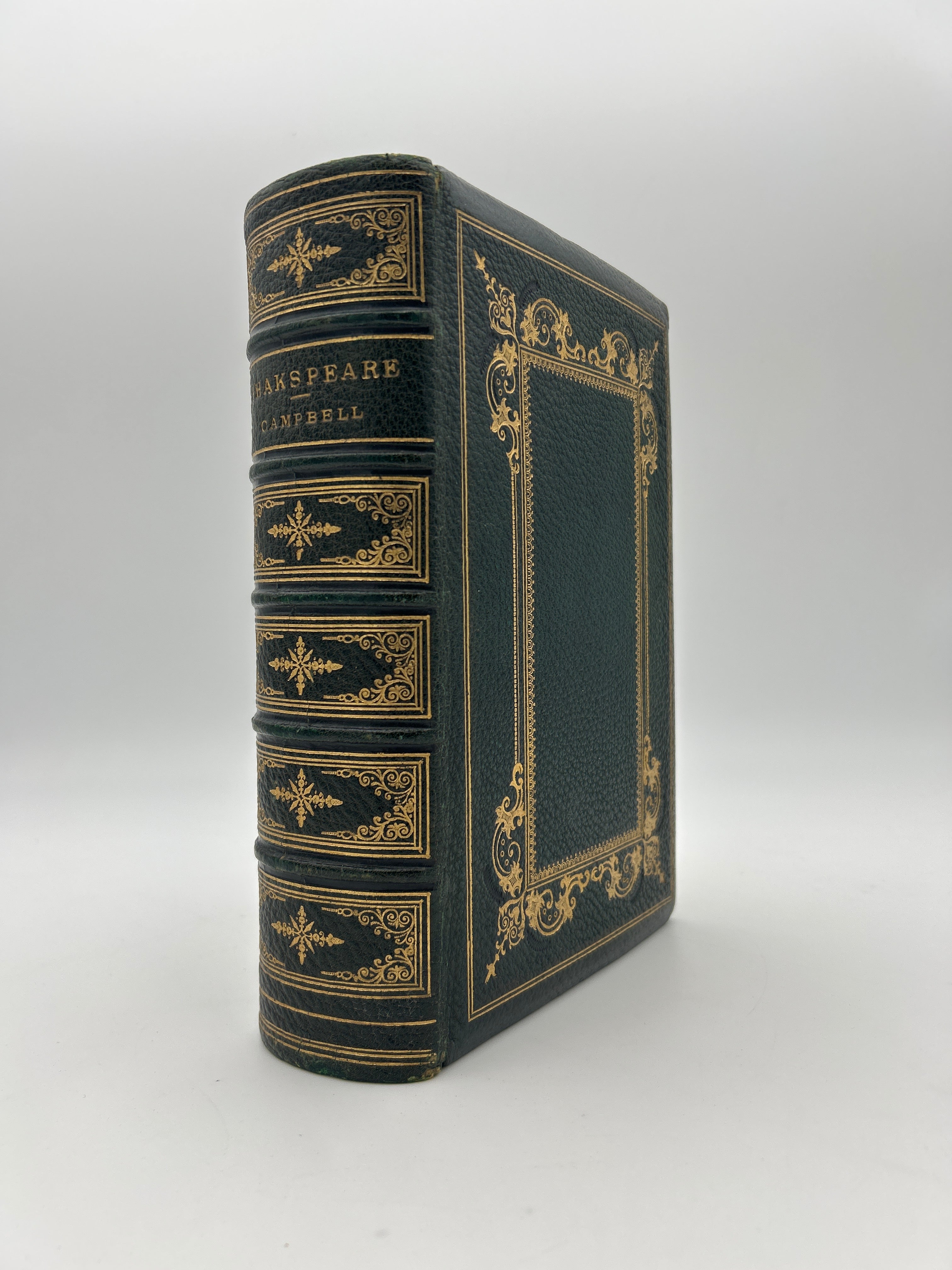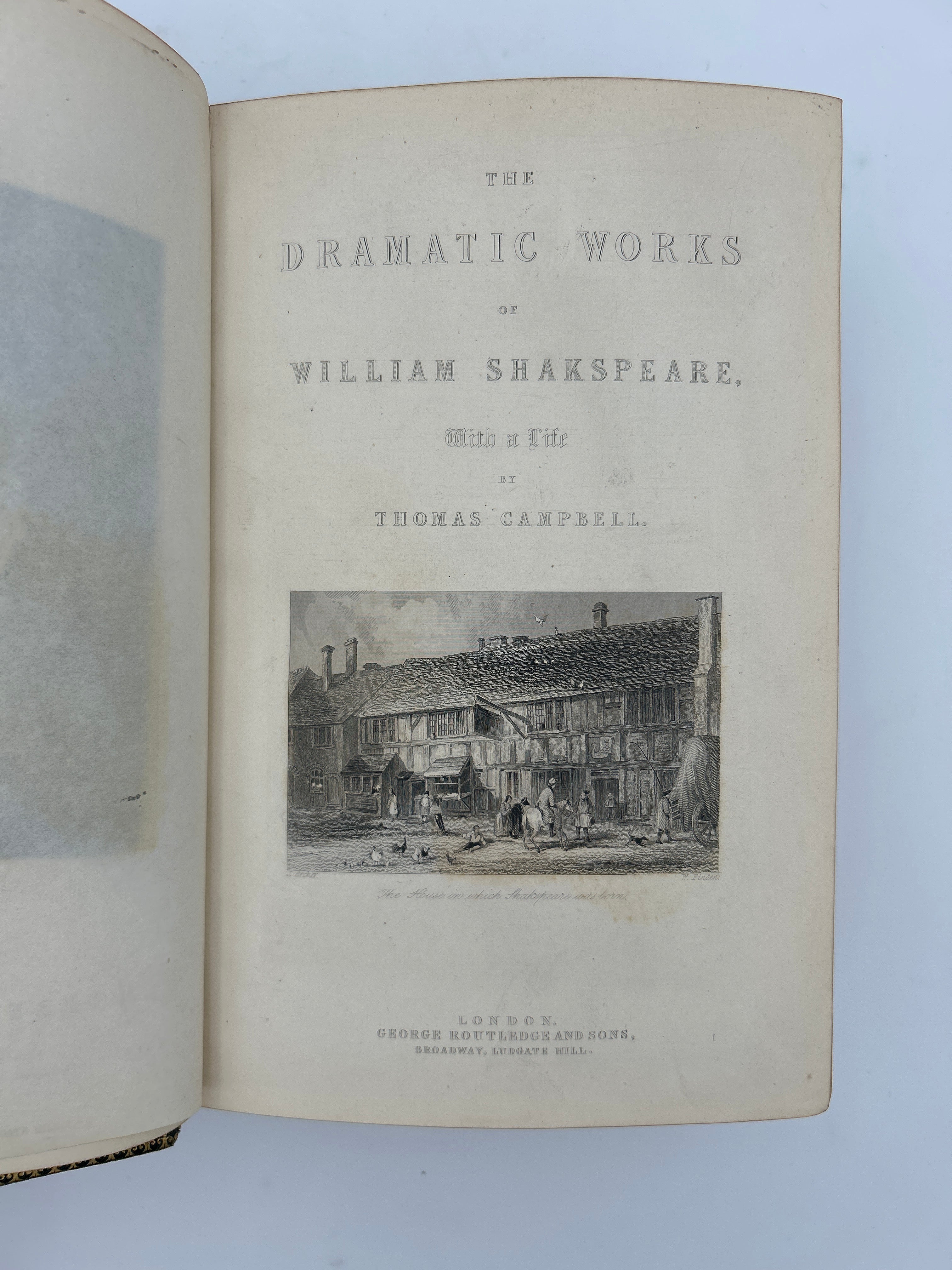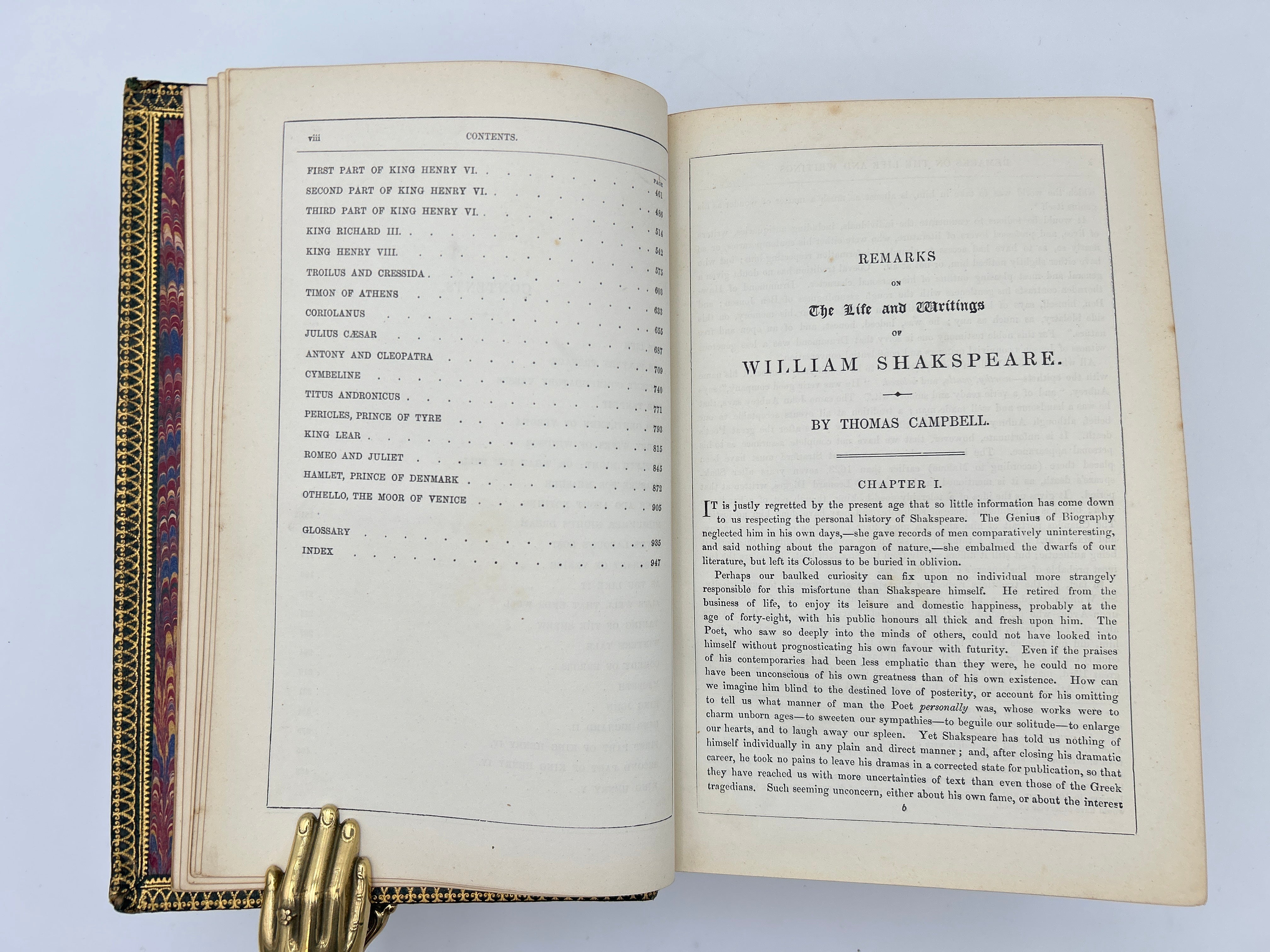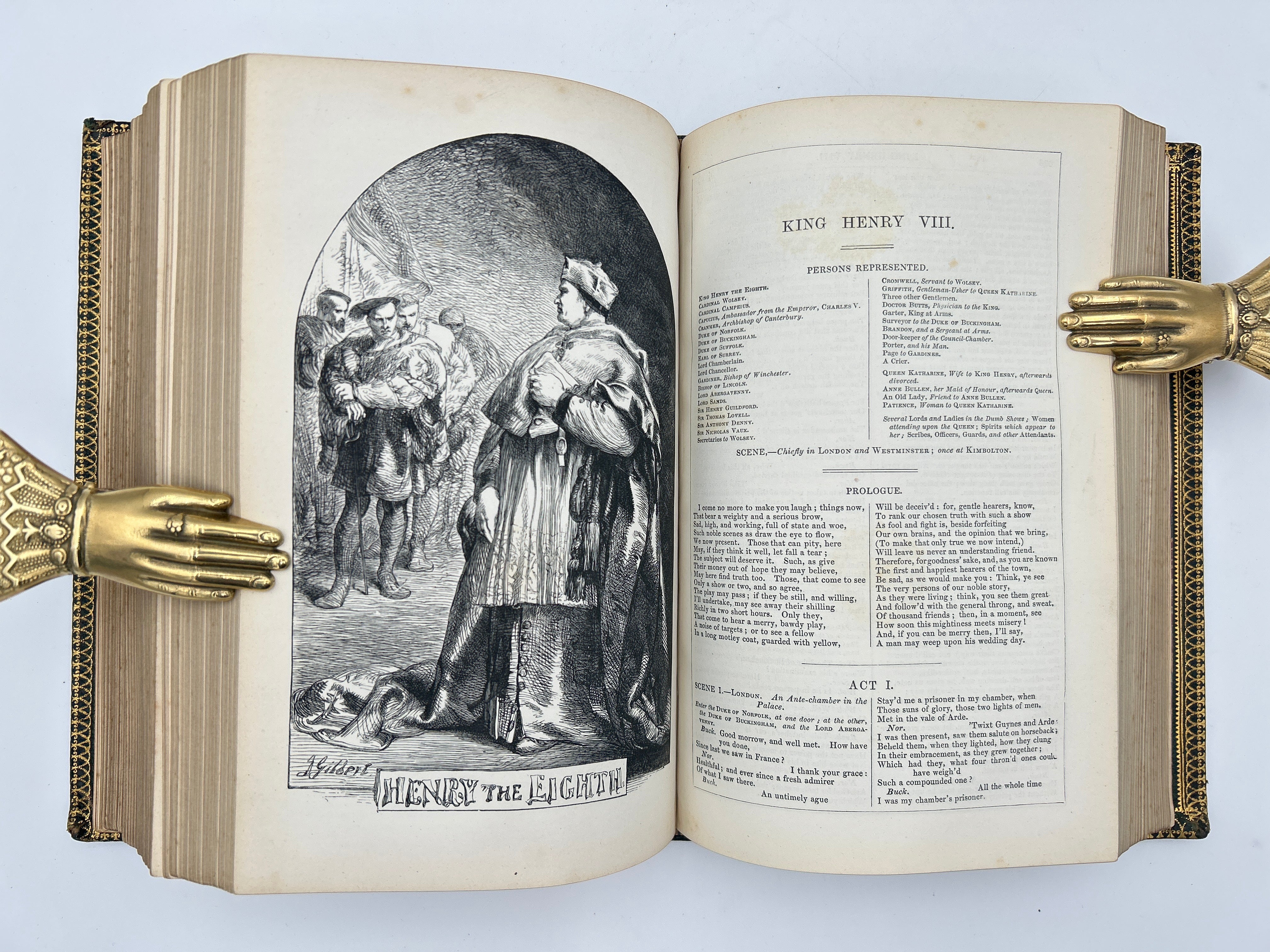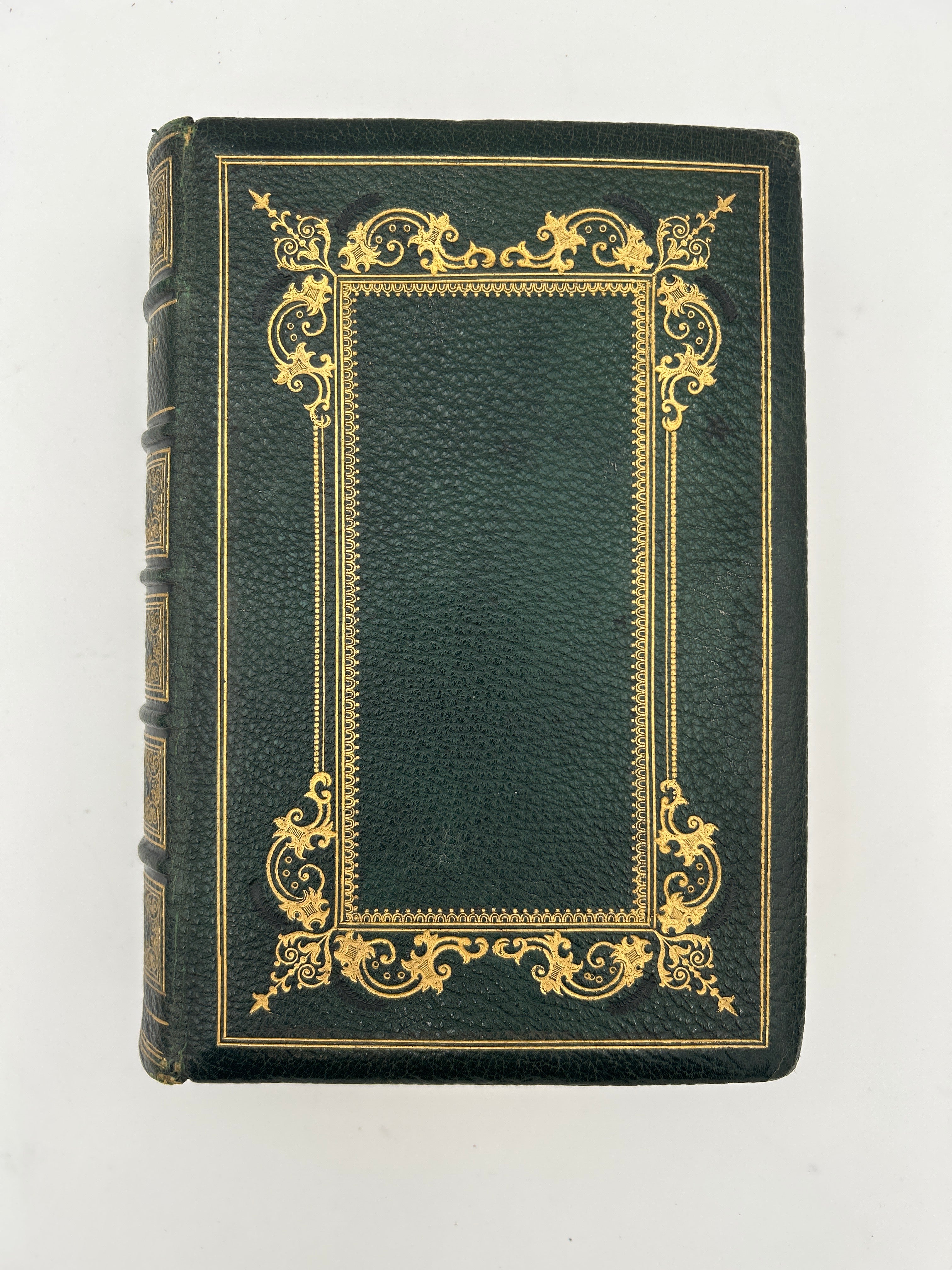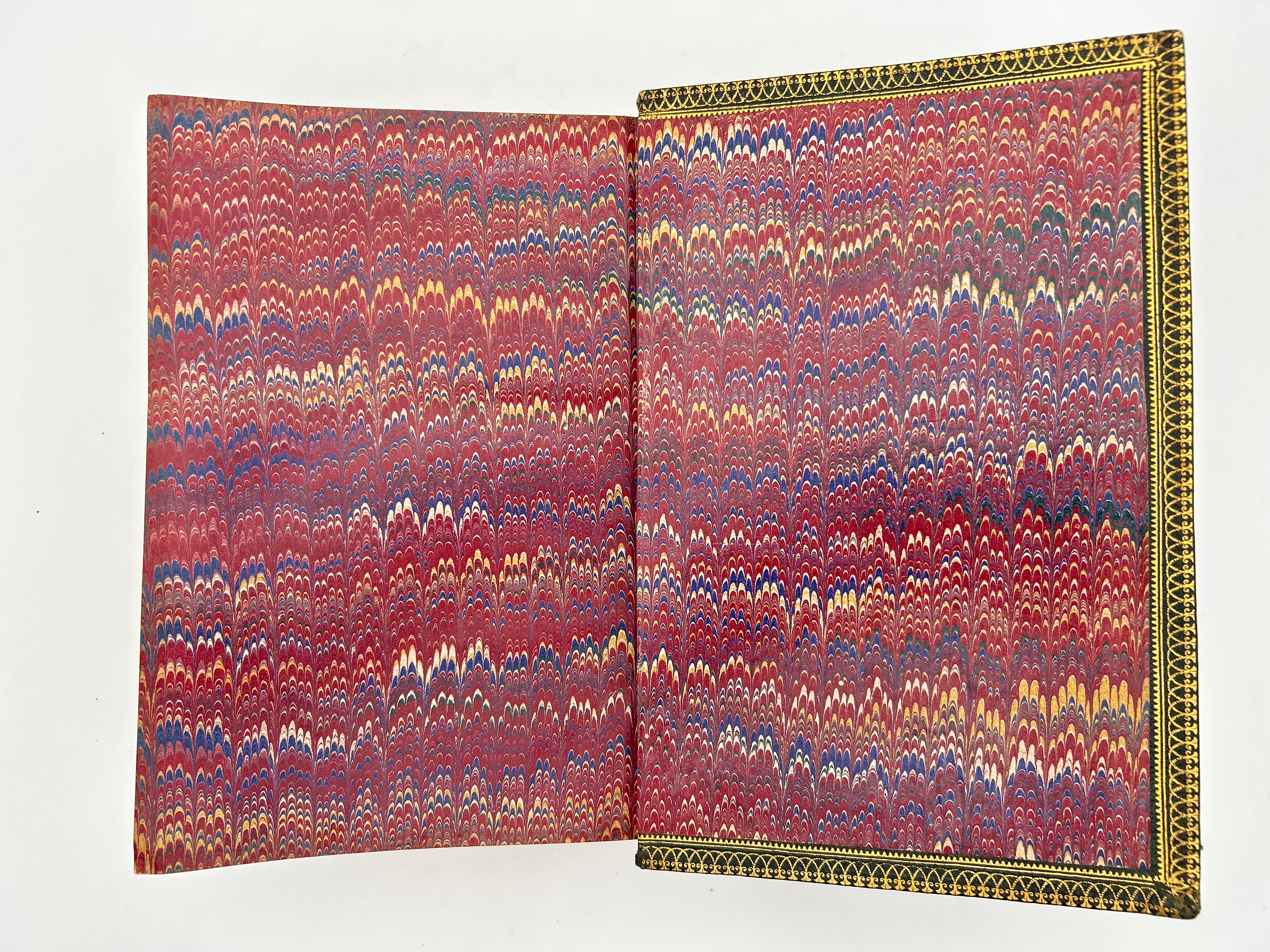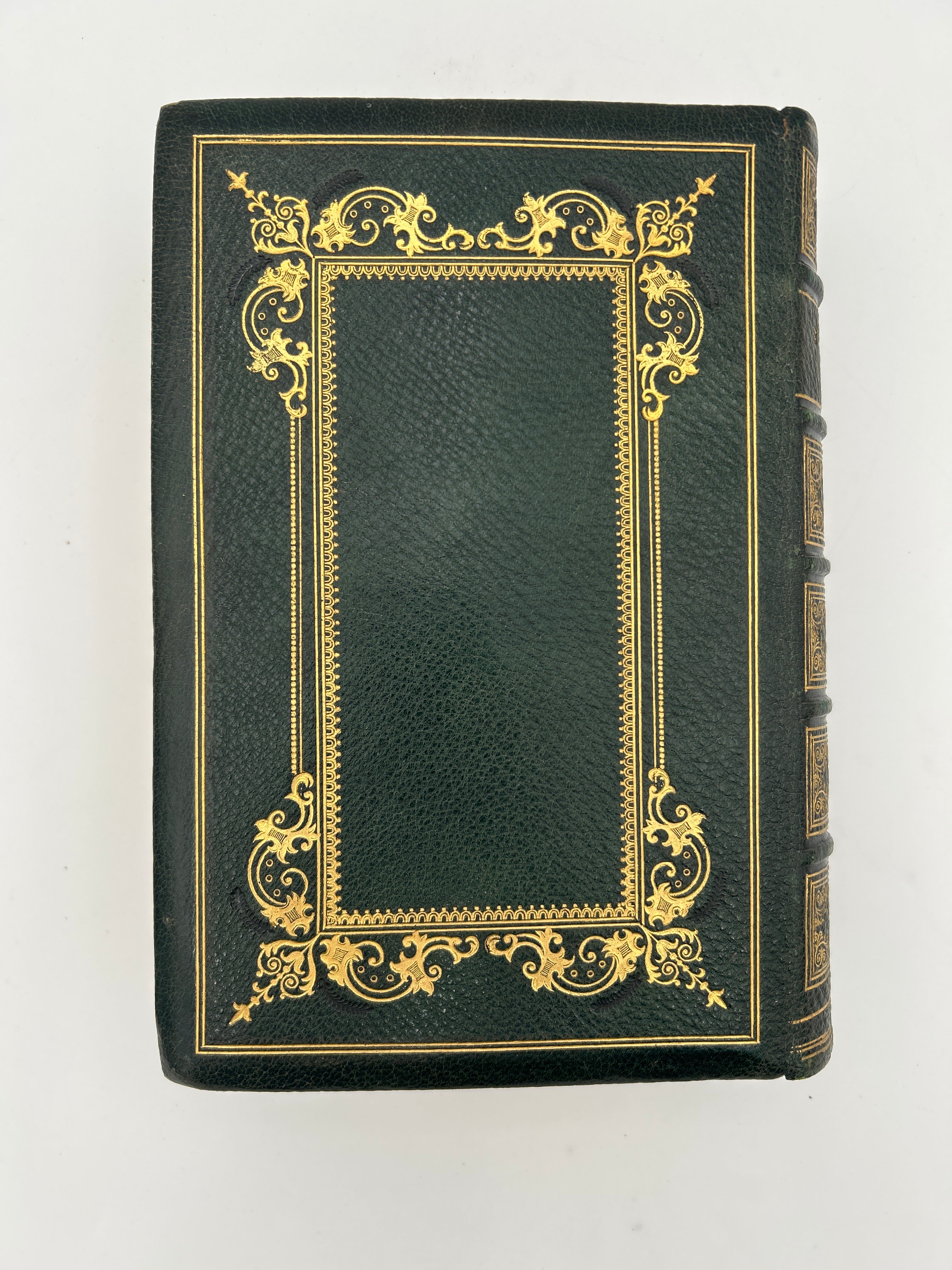The Dramatic Works of William Shakespeare
Couldn't load pickup availability
5b William Shakespeare, London: Routledge, 1838.
Notes
The dramatic works of William Shakespeare are a cornerstone of English literature and have had a profound influence on the development of theatre and drama. Shakespeare wrote approximately 39 plays, which are typically categorized into three main genres: tragedies, comedies, and histories.
Tragedies are perhaps his most famous works, exploring themes of human flaw, ambition, jealousy, love, and revenge, often with tragic outcomes. Notable tragedies include Hamlet, which explores themes of madness, revenge, and mortality; Macbeth, dealing with ambition and guilt; Othello, a story of jealousy and betrayal; and King Lear, which examines family loyalty, power, and aging.
Comedies by Shakespeare are known for their humor, wit, and often mistaken identities or gender roles. They usually end with a marriage or reunion. Famous comedies include A Midsummer Night's Dream, which blends magic, love, and comedy in a forest setting; Twelfth Night, a romantic tale of mistaken identities and love; and Much Ado About Nothing, which explores love and deception.
Histories primarily focus on the lives of English kings and the political and military struggles that defined the nation's history. Plays like Richard III and Henry V are among the most well-known, offering commentary on power, leadership, and morality.
Shakespeare's works are celebrated not only for their engaging plots and deep characterizations but also for their use of language. He coined many words and phrases still in use today and demonstrated an unparalleled mastery of poetic form, particularly iambic pentameter. The complexity and universality of his themes ensure that his plays continue to be performed, studied, and revered by audiences and scholars around the world.
Description
Full green pebbled Morocco leather, 9 1/2 inches tall. Heavy Victorian gran Morocco with raised bands, ornate gilt tooling to the panels and boards. Gilt dentelles and all edges gilt. Double column. Portrait, engraved title page and full page illustrations. The bookplate of Queen’s College London. Minor bumps to the corners and rubbing to upper and lower spine. Marbled endpapers.
